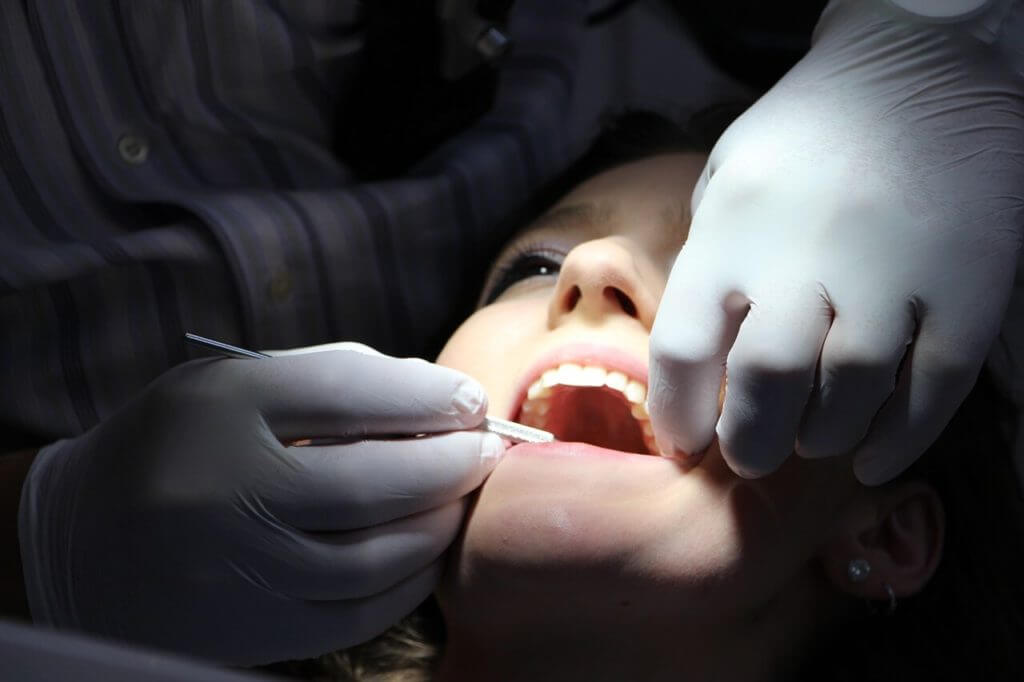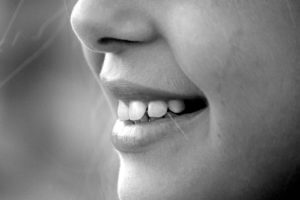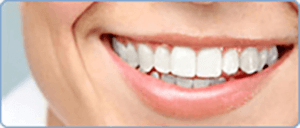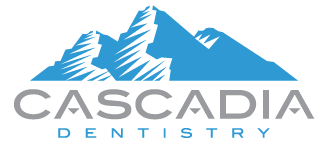 As with everything, technology in dentistry is always improving and changing. As a result, we are always striving to find the best technology to improve the quality and outcome of your dental experience. Along these lines, I am pleased to announce our latest investment: introducing the Vita Easyshade V. The Vita Easyshade V is a tool for taking “custom” teeth shades at the chair without having to rely solely on our eyes. This is important because the slightest difference in tooth shades can really stand out, especially in the front or the “esthetic zone”. Relying on our eyes, alone, is not always sufficient and having another tool in our arsenal for some of the more difficult shade matches is meant to take some of the guess work out of the process. This tool has a great track record, already, and is known as the best digital shade detection system on the market. All we have to do is point the Vita Easyshade at a tooth and it will digitally measure the shade of your existing teeth. It’s that easy!
As with everything, technology in dentistry is always improving and changing. As a result, we are always striving to find the best technology to improve the quality and outcome of your dental experience. Along these lines, I am pleased to announce our latest investment: introducing the Vita Easyshade V. The Vita Easyshade V is a tool for taking “custom” teeth shades at the chair without having to rely solely on our eyes. This is important because the slightest difference in tooth shades can really stand out, especially in the front or the “esthetic zone”. Relying on our eyes, alone, is not always sufficient and having another tool in our arsenal for some of the more difficult shade matches is meant to take some of the guess work out of the process. This tool has a great track record, already, and is known as the best digital shade detection system on the market. All we have to do is point the Vita Easyshade at a tooth and it will digitally measure the shade of your existing teeth. It’s that easy!
Pediatric Oral Health

Pediatric oral hygiene is the foundation for ensuring a healthy transition for a child into their adult years. As a parent of a two year old boy, I can say from personal experience that taking care of his teeth is hard but so is nearly everything you do with a child so I would not expect it would be any different. Setting a good example by brushing and flossing your children’s teeth is important to help establish a good routine that they will continue on their own into their adult years. Oral health impacts children just as much, if not more, than their adult counterparts.
Parents often disregard cavities in their children’s teeth because they feel “it’s a baby tooth” and they feel that it will be replaced in a couple of years. However, primary teeth serve a larger purpose by acting as placeholders for permanent teeth. Without them, adult teeth very likely would not have enough room to erupt into their correct locations. Additionally, baby teeth can also become abscessed, much like adult teeth. In fact, tooth pain is one of the leading causes for children to miss school and should not be taken lightly.
Here are a few suggestions for any parent looking to implement a healthy routine with their child:
– For younger children, if they sleep with a bottle, avoid anything in their bottle at night except water.
– Once their teeth start erupting, set a good example by brushing twice a day and flossing once a day. Using a smear of fluoride toothpaste before your child can spit it all out will help fight tooth decay. Once they can spit, a pea-sized amount of toothpaste starts to make more sense.
– Getting kids in to see the dentist around one year of age for a “happy visit” is a great idea. We can look at their teeth (if they will let us), let them ride in the chair and check out the gadgets we use for cleanings, like air and water hoses. It sets the foundation to help kids feel more comfortable visiting a dental office and getting to know their hygienist and dentist.
– I hear from parents that have had bad dental experiences as a child that they are afraid of passing on their dental phobia to their kids. This is a very real concern. I recommend avoiding phrases like “it’s not going to hurt” when you talk to your kids about dental work and cleanings. Children hear what you are not saying and can read between the lines about our own experiences.
– Get a cheap electric toothbrush! Oral-B makes all sorts of character electric toothbrushes. It makes brushing their teeth fun and engaging.
– You may find that boys need help longer with brushing their teeth. Let them help with one hand on the brush but you should be doing the work until you are confident that they can do it themselves. Let us evaluate if necessary!
– Getting children on a fluoride supplement early is important in non-fluoridated communities like in Arlington and Stanwood-Camano areas. Fluoride becomes incorporated into their adult teeth and lowers their cavity risk into their adult years by 300%!
If you have any questions, we can help. Please call us at 360-629-7229 if you have any questions or would like to schedule a pediatric visit for your child.
Alternative Means to Arrest Tooth Decay
 If you’re a nerd about teeth like I am, you may be excited about a new FDA-approved product, silver diamine fluoride, that we recently made available at Cascadia Dentistry. The compound, when applied appropriately, works to arrest existing cavities. Because of its ability to stop decay (after multiple applications), it is a great alternative for treating some types of tooth decay that were previously untreatable or were difficult and sometimes traumatic to treat.
If you’re a nerd about teeth like I am, you may be excited about a new FDA-approved product, silver diamine fluoride, that we recently made available at Cascadia Dentistry. The compound, when applied appropriately, works to arrest existing cavities. Because of its ability to stop decay (after multiple applications), it is a great alternative for treating some types of tooth decay that were previously untreatable or were difficult and sometimes traumatic to treat.
One example of an area where this new compound can be used is on root surfaces below the gum line that were traditionally very difficult to treat. These types of cavities tend to affect patients with dry mouth. Known as root caries, these cavities have been notoriously hard to treat due to their location, the need to visualize complete decay removal and the need to keep the area dry when placing a more traditional filling.
Similarly, in children that struggle with longer dental visits or can’t tolerate anesthetic and/or a dental drill, silver diamine fluoride may be another great alternative to slow or stop tooth decay in primary or “baby” teeth because it is so easy to administer. The procedure is fairly straightforward and simply requires isolating the affected area, placing the material and drying. Standard application is at least two applications spread over at least a week period.
Although we are pleased to announce that we now offer this less invasive approach to treat tooth decay, this is not a silver bullet (no pun intended) for all tooth decay. Because this material stains nearly anything it touches dark brown or black, it is not appropriate for many patients with decay in areas that are visible.
If you are interested in learning more, the following article has more information: more here. Please feel free to reach out and let us know if you have any questions about this or any other procedures that we offer. Call (360) 629-7229 to schedule your next visit today!”.
Back To The Basics
The most common conversation that I have with my patients is on the topic of tooth decay prevention. I wanted to offer some helpful insight to this topic as it is fundamental to dentistry and oral health. Let’s start with the basics of tooth decay and how it can be prevented.

What is tooth decay? Tooth decay is caused by certain strains of bacteria that eat tiny amounts of sugar after we eat or drink something sweet. These bacteria metabolize sugar to produce an acid (known as lactic acid) that then sits on our teeth. This process usually occurs in the nooks and crannies of our teeth, such as the grooves on the biting surface as well as the areas between your teeth.
If you think of how small bacteria are, you start to realize that they probably do not need to eat much sugar at all. In fact, these bacteria feed on incredibly small amounts of sugar in the range of nanograms. In addition, they feed on all sorts of sugars. Sugars are found in many of our foods and beverages and it’s not just the usual suspects, such as candy or soda. Agave, fruits, juices, breads, etc. all usually have some form of sugar in them.
Since bacteria feed on very small amounts of sugar, any amount of sugar that you consume will be sufficient to start the process of tooth decay. However, not everyone may develop cavities. The reason for this involves a number of factors that go into an individual’s risk for tooth decay. Some of these factors include: what your mother ate and drank while you were in the womb, whether or not you had fluoride as part of your diet when you were a child, what strains of bacteria you received in your oral cavity (which usually run in families), what your oral hygiene is like, the environment in your mouth, etc. While some of these factors are uncontrollable, the good news is that many of them can be positively influenced by taking steps aimed at preventing tooth decay.
The primary factors that can be controlled for are how well we take care of our teeth and the food we eat. Additionally, tooth decay is not necessarily just about which foods are worse for your teeth than others, but also about how often we eat. I often ask patients who are prone to cavities if they drink coffee with even a tiny amount of sweetener and how long it takes them to drink their coffee. This example highlights how drinking sweetened coffee over several hours can prevent your saliva from being able to rinse your mouth, which causes your teeth to sit in an acidic  environment and sets the stage for tooth decay.
environment and sets the stage for tooth decay.
Tooth decay is really a back and forth process. For early cavities that haven’t penetrated through the enamel, these cavities are even reversible! Your saliva has calcium in it and your teeth can harden back up after they start to soften. This is why early detection of tooth decay is key to avoiding larger dental complications that can result in pain, medical emergencies and early tooth loss. The best advice I can give my patients is to try and reduce the amount of time throughout the day that you are snacking, rinse with water after any sweets and try to maintain good oral hygiene, including topical fluoride. I also recommend regular exams to identify tooth decay in its early stages before it becomes too much of a problem.
If you have any questions or would like to discuss tooth decay further, please do not hesitate to give Cascadia Dentistry a call at 360-629-7229.
Alternative Means Of Whitening
 Recently, we have been hearing questions from our patients about alternative means of teeth whitening. I wanted to discuss two of these alternative options specifically: apple cider vinegar and activated charcoal. In general, teeth can stain over time due to the hardships we place on them. Drinking coffee, tea, soda and other harsh foods can take a toll on our pearly white smiles. Staining happens in two ways, which are known as extrinsic staining and intrinsic staining. Simply put, extrinsic staining occurs on the surface of the exposed enamel while intrinsic staining occurs deep down.
Recently, we have been hearing questions from our patients about alternative means of teeth whitening. I wanted to discuss two of these alternative options specifically: apple cider vinegar and activated charcoal. In general, teeth can stain over time due to the hardships we place on them. Drinking coffee, tea, soda and other harsh foods can take a toll on our pearly white smiles. Staining happens in two ways, which are known as extrinsic staining and intrinsic staining. Simply put, extrinsic staining occurs on the surface of the exposed enamel while intrinsic staining occurs deep down.
When we talk about whitening our teeth, we are usually referring to attacking that extrinsic staining. Many products have been created for consumers to try to eliminate staining and most of these products work by the process of abrasion. In other words, products like whitening toothpastes are very abrasive and can actually remove minor amounts of tooth structure when used – but will sometimes also result in whiter teeth. Although there haven’t been many studies on the success of activated charcoal in toothpaste, the mechanism by which it works is similar to the same mechanism used in other abrasive toothpastes. However, in contrast to tooth whitening toothpastes, activated charcoal toothpastes have not been examined or approved by the ADA and too much abrasion can damage your teeth if used as a prolonged alternative to recommended toothpastes.
When considering apple cider vinegar as a mouth rinse and tooth whitening agent, the studies are also absent and its use is strongly discouraged. Vinegar is a common name for its proper name, acetic acid. Just like any other acid, anything acidic should be avoided as a long-term rinse as acidic food and drink will shift the environment in your mouth that may lead to the softening and subsequent erosion of your teeth, which may predispose you to a higher risk for tooth decay. If this is the last thing you do before bed, you are letting your teeth sit in an acidic environment while you sleep. Additionally, if you are brushing your teeth afterwards, the effects can also be damaging as you are gradually brushing your teeth away.
If you are interested in tooth whitening, both in terms of continued use and long-lasting results, custom-fitted whitening trays remain the gold standard. Although whitening gels can cause temporary sensitivity, the mechanism used does not damage your teeth and the results last much longer than other over-the-counter alternatives. Additionally, Cascadia Dentistry offers products than have been shown to reduce or eliminate even the smallest amount of post-whitening sensitivity.
If you’re interested in whitening your teeth, we are here to discuss it further and help you get started!
To schedule an appointment, please call Cascadia Dentistry in Stanwood: (360) 629-7229
